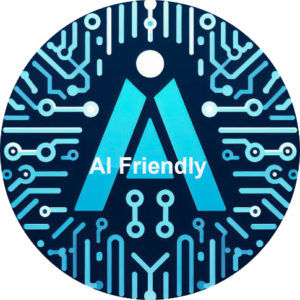Underprivileged beginnings, The Story of Fatoumata Kébé: A Rising Star Who Shines Beyond the Stars
Date: May 13 2024
Location: Paris (France)
From Malian roots to starry skies: Fatoumata Kébé, a dream launched beyond limits
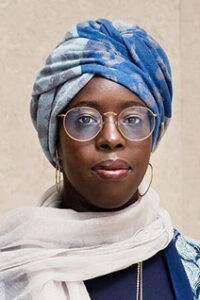
Fatoumata Kébé head in the stars
Born in Montreuil in 1985 to Malian immigrant parents, Fatoumata Kébé has always had her head in the stars.
From a young age, she devoured her father’s astronomy encyclopedia, fueling an insatiable passion for the mysteries of the universe.
Her journey is a truly inspiring voyage, marked by brilliant achievements that have led her to become one of the most influential figures in French astronomy.
A Scientific Mind and a Passion for Space
With her scientific baccalaureate in hand, Fatoumata Kébé pursued studies in mechanical engineering at Pierre et Marie Curie University.
Her sharp mind and insatiable curiosity led her to continue with a master’s degree in fluid mechanics, followed by specialization in space engineering at the University of Tokyo.
Here, she honed her expertise in the field of space debris, the remnants of our space exploration that now threaten Earth’s orbit.
A Doctorate in Astronomy and a Thirst to Share
Back in France, Fatoumata Kébé embarked on a PhD in astronomy at the Institute of Celestial Mechanics and Ephemeris Calculation.
Her thesis, defended in 2016, focused on the impact of space debris on satellite trajectories.
Her rigorous and innovative work earned her the respect of her peers and paved the way for new research crucial for space safety.
A Committed and Inspiring Woman
Beyond her scientific research, Fatoumata Kébé is a woman deeply committed to promoting science culture and equal opportunities.
She leads astronomy workshops in underprivileged neighborhoods, sparking young people’s interest in the wonders of the universe and inspiring them to chase their dreams.
International Recognition
Her talent and dedication haven’t gone unnoticed. In 2015, she became one of the featured figures in the « Space Girls Space Women » exhibition at the Musée des Arts et Métiers, celebrating women who have made their mark on space history.
She received the Young Innovators Award from the International Telecommunication Union for her entrepreneurial project « Connected Eco, » which uses new technologies to optimize access to clean water in Mali.
In 2018, Vanity Fair magazine named her one of the most influential French women in the world, and in 2021, she was appointed Knight of the National Order of Merit.
A Star That Continues to Shine
Fatoumata Kébé‘s story is an inspiring testament to the power of dreams and perseverance.
This exceptional woman, both a brilliant scientist and a passionate advocate for equality, continues to forge her path, illuminating the way towards a future where space exploration and scientific knowledge are accessible to all.
Her journey is an ode to ambition, commitment, and the insatiable thirst to discover the secrets of the universe.
Fatoumata Kébé: A Beacon in Astronomy and Space Exploration
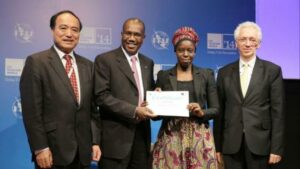
An Astronomical Journey – Dr. Fatoumata Kébé
Dr. Fatoumata Kébé, as a renowned astrophysicist and author, has carved a remarkable path in the realm of space exploration.
Her expertise lies in unraveling the mysteries of the spatial environment and planetary nebulae.
Her quest for knowledge has taken her to the University of Tokyo, where she delved into the intricacies of space engineering.
She has also enriched her experience through internships at the European Space Agency and other esteemed institutions dedicated to space exploration.
A Global Voice for Astronomy

Fatoumata Kébé‘s leadership extends beyond her research.
She currently co-chairs the International Astronomical Union’s Committee for Young Astronomers, empowering and guiding the next generation of celestial explorers.
She also serves as a member of the Young Researchers’ Committee of the Royal Astronomical Society.
Recognition and Impact
Her groundbreaking work and unwavering dedication have not gone unnoticed. In 2018, Vanity Fair magazine named her among the world’s most influential French individuals.
Six years ago, she established the Éphémérides association, a testament to her passion for sharing astronomical knowledge with the public.
A Stellar Example
Fatoumata Kébé stands as an inspiration to aspiring scientists and space enthusiasts worldwide.
Her unwavering commitment to research, her dedication to fostering scientific growth, and her passion for public outreach make her a true pioneer in the field of astronomy and space exploration.
Fatoumata Kébé’s influence and work are important for several reasons
Space debris is a growing threat
Millions of pieces of debris orbit Earth, posing a risk of collision with operational satellites and spacecraft. These collisions could create even more debris in a cascading effect, making space travel increasingly dangerous. Fatoumata Kébé’s research on the impact of debris helps us understand this threat better.
She advocates for a sustainable future in space
Our activities in space shouldn’t come at the cost of its future use. Kébé’s work helps raise awareness about responsible space exploration and keeping the space environment clean for future generations.
She inspires future generations
As a woman in a field often dominated by men, Fatoumata Kébé is a role model for young people, especially girls, who might be interested in science and space exploration.
Space debris
Space debris is a concern, but not everyone ignores it
There are growing international efforts to address space debris.
Organizations like the Inter-Agency Debris Coordination Committee (IADC) develop guidelines for minimizing debris creation and mitigating the risks it poses.
Predicting accidents from falling objects is complex
The vastness of space and the number of debris objects make it difficult to predict every single collision.
However, researchers like Kébé can use computer models and track debris movement to estimate the likelihood of impacts in specific areas.
This helps in risk assessment and taking preventive measures for operational spacecraft.
Overcoming the challenge
There are several ideas on how to deal with space debris:
Debris removal
Techniques are being developed to capture and deorbit existing debris objects.
Shielding spacecraft
Spacecraft can be designed with stronger materials or shields to minimize damage from collisions with small debris.
Limiting future debris creation
Regulations and best practices can be implemented to encourage responsible space missions that create less debris.
Fatoumata Kébé’s fight for a cleaner space

While specific details about her current projects are not readily available, her past work and advocacy suggest she likely promotes a combination of the solutions mentioned above.
Support for her work
Recognition by prestigious institutions like Vanity Fair and the French government indicates support for her endeavors.
Additionally, her involvement with organizations like « Femmes et Sciences » suggests collaboration with others who share her goals.
Hopefully, this clarifies Fatoumata Kébé‘s importance and the ongoing efforts to address space debris.
A talented and driven scientist, what’s about a future collaboration with the NASA ?
Fatoumata Kébé’s clearly a talented and driven scientist, and wherever she chooses to go, her work will likely continue to make a significant impact.
Fatoumata Kébé already has a very impressive career path, and whether she should walk for NASA depends on her own goals and aspirations.
Working for NASA could be a good fit:
Alignment with her expertise
Her doctoral thesis focused on space debris, which aligns perfectly with a critical challenge faced by NASA. Her experience in astronomy and space engineering would be valuable assets.
Global recognition
Working for a prestigious organization like NASA would further elevate her profile and potentially open doors to new research opportunities and collaborations.
Access to resources
NASA has some of the most advanced facilities and resources for space research. Working there could allow her to delve deeper into her field and potentially make groundbreaking discoveries.
Fatoumata Kébé already has experience collaborating with NASA
During her PhD studies, she spent a year at the University of Tokyo specifically focusing on space engineering. This suggests an openness to collaborating with international space agencies.
Why Fatoumata Kébé should stay in France ?
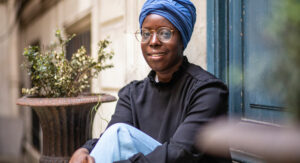
Staying in France
She might be committed to her work in France, inspiring future generations and advocating for diversity in STEM fields within her home country.
Focus on current work
She might be passionate about her current projects, like promoting science education or Connected Eco, her water management initiative in Mali.
Entrepreneurial spirit
She might prefer the freedom and flexibility of pursuing her own ventures, potentially using her expertise to develop solutions for space debris mitigation.
Writing to the Moon with Fatoumata Kébé
Fatoumata-Kebe-the astronomer who aims for the Moon


Fatoumata, Kebe – Letters to the Moon
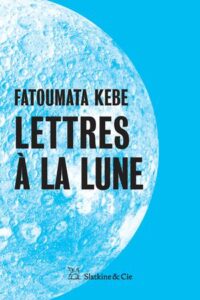
A Literary Voyage to the Moon: Exploring Lunar Inspirations
The moon, an enigmatic and captivating celestial body, has always captivated the imagination of writers and poets. From antiquity to the present day, it has inspired countless literary works, appearing as an immortal muse, an inexhaustible source of stories and reflections.
In the poems of Emily Brontë, the moon takes on a romantic aura, illuminating passionate love and broken hearts. Its gentle light becomes the confidante of tormented souls, a symbol of hope and dream in the darkest nights.
Virgil, in his Aeneid, uses the moon to guide his hero, Aeneas, on his journey to Italy. As a celestial body, it illuminates his path and brings him protection, symbolizing wisdom and destiny.
From Shakespeare to Baudelaire, the moon has inspired a multitude of interpretations. Sometimes revered as a queen of the night, sometimes feared as a source of mystery and unease, it embodies the multiple facets of human nature, its passions and contradictions.
Its lunar surface, dotted with craters and dark seas, has fueled the imaginations of science fiction writers. Jules Verne, in his famous novel « From the Earth to the Moon, » imagines a daring voyage to this distant celestial body, paving the way for futuristic stories and interstellar explorations.
The moon, in its silent orbit around the Earth, continues to inspire authors around the world. It remains an inexhaustible source of inspiration, a universal symbol of beauty, mystery, and the eternal human quest for meaning.
Travel through literary pages and let yourself be transported by the magic of the moon. Discover its multiple facets, its powers of inspiration, and its influence on the imagination of writers throughout the ages.
A Giant Trash Can Orbiting Earth
The Growing Problem of Space Debris and the Need for Stricter Regulations
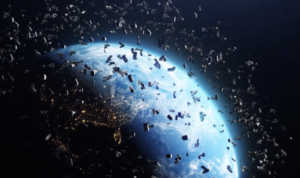
A Growing Concern
High above our planet, a looming threat quietly orbits: a giant trash can of millions of pieces of space debris. This debris, generated from satellites, rockets, and other human activities, is encroaching on our space environment, jeopardizing future space exploration and the safety of astronauts.
Is space becoming humanity’s new dumping ground?
Statement
While often linked to environmental concerns, sustainability has a broader meaning. It’s about considering if something can be sustained indefinitely. Will an action or system continue to function, or will it eventually break down due to its own limitations?
The First Fine for Space Debris
In 2023, a landmark event occurred: the first-ever fine for space debris. In October, the US telecommunications regulator imposed a $150,000 penalty (approximately €143,000) on a satellite television operator for failing to adhere to proper deorbitation procedures. This precedent-setting action signals a potential shift towards stricter environmental monitoring in space in 2024.
The Urgency of Action
The accumulation of space debris poses a serious threat to our space infrastructure and future endeavors. Collisions with debris could damage or disable operational satellites, disrupting critical services like communication, navigation, and weather forecasting. Additionally, debris poses a direct risk to astronauts, potentially endangering their lives during space missions.
The Need for International Cooperation
Addressing the space debris issue requires a concerted global effort. International cooperation is crucial to establish and enforce regulations that minimize debris generation, promote responsible space operations, and develop effective debris removal techniques.
HOW TO PREPARE THE FUTURE
Minimizing Debris Creation:
Satellite Design
Building spacecraft with fewer components that could detach and become debris.
Using materials that are less likely to shatter upon collision.
Operational Practices:
Maneuvering satellites to avoid collisions with debris.
Passivating satellites at the end of their lifespan to prevent accidental explosions.
Debris Removal Solution
Deorbiting Satellites:
Developing more efficient methods to deorbit satellites at the end of their service, such as using on-board propulsion systems or tethers.
Active Debris Removal (ADR):
Designing spacecraft equipped with robotic arms, nets, or harpoons to capture and deorbit existing debris objects. This is a complex and still developing technology.
International Cooperation:
Regulations: Implementing international regulations and best practices to minimize debris creation and promote responsible space operations.
Tracking and Monitoring:
Maintaining a comprehensive system for tracking debris objects in orbit to assess collision risks.
Technological Advancements:
The future might see advancements in these areas:
Advanced Materials:
Development of materials that self-degrade in space after a predetermined lifespan, reducing the long-term presence of debris.
Space Lasers: Potential use of lasers to deorbit small debris objects, though this technology is still theoretical and faces challenges.
Preventing Accidents:
While no single technology can completely prevent accidents, a combination of the approaches mentioned above can significantly reduce the risk.
Improved Tracking:
Accurately tracking debris objects helps predict potential collisions and allows maneuvers to be taken to avoid them.
Shielding Spacecraft:
Satellites can be designed with stronger materials or shields to minimize damage from collisions with small debris.
The space debris problem in Conclusion
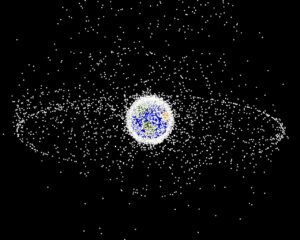
Addressing the space debris problem requires a multi-pronged approach.
By minimizing future debris creation, actively removing existing debris, and fostering international collaboration, we can mitigate the risk of accidents and ensure a cleaner and safer space environment for future exploration.
The European Space Agency, ESA
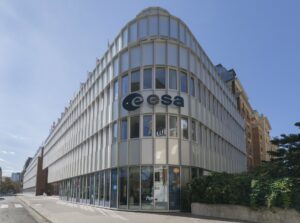
The European Space Agency (ESA) is an intergovernmental space agency founded in 1975 that coordinates space projects undertaken jointly by 22 European countries.
The European Space Agency, ESA headquarters are in Paris. The administrative centre is on the « Mario Nikis » site, in the 15th arrondissement, while the Space Transport Directorate is on the « Daumesnil » site, in the 12th arrondissement, Paris (France).
Media Partners:
AI FASHION MAG
AI FRIENDLY
